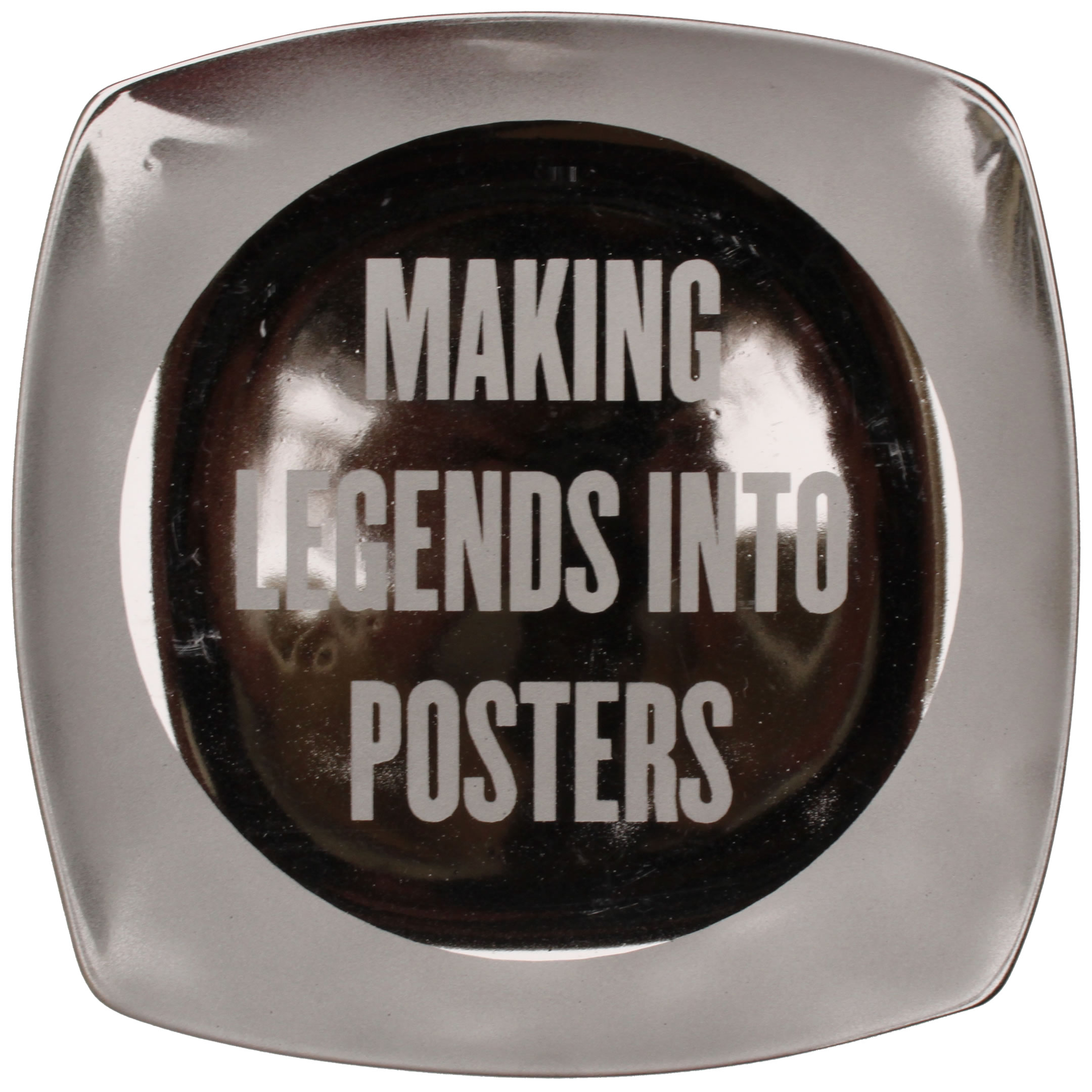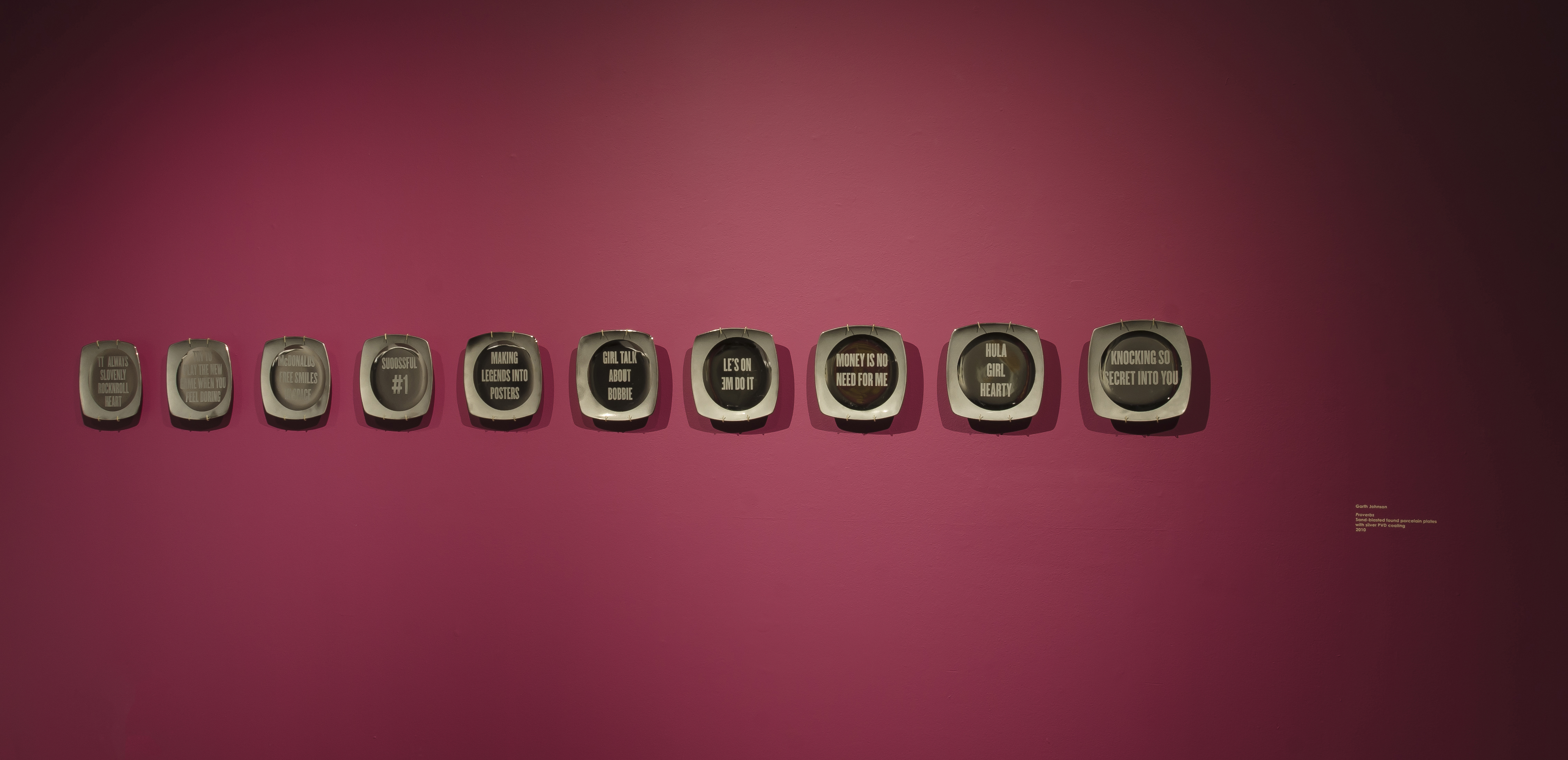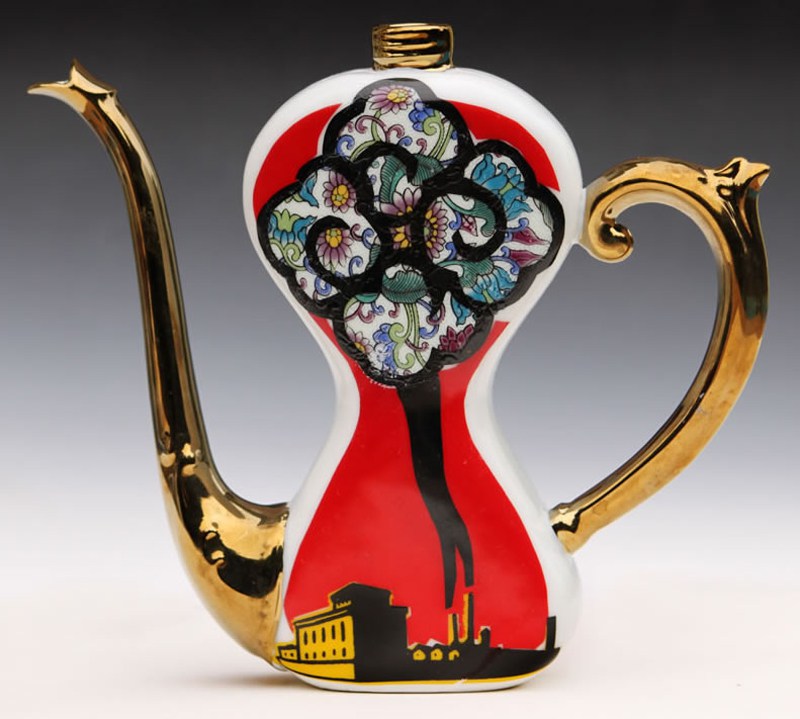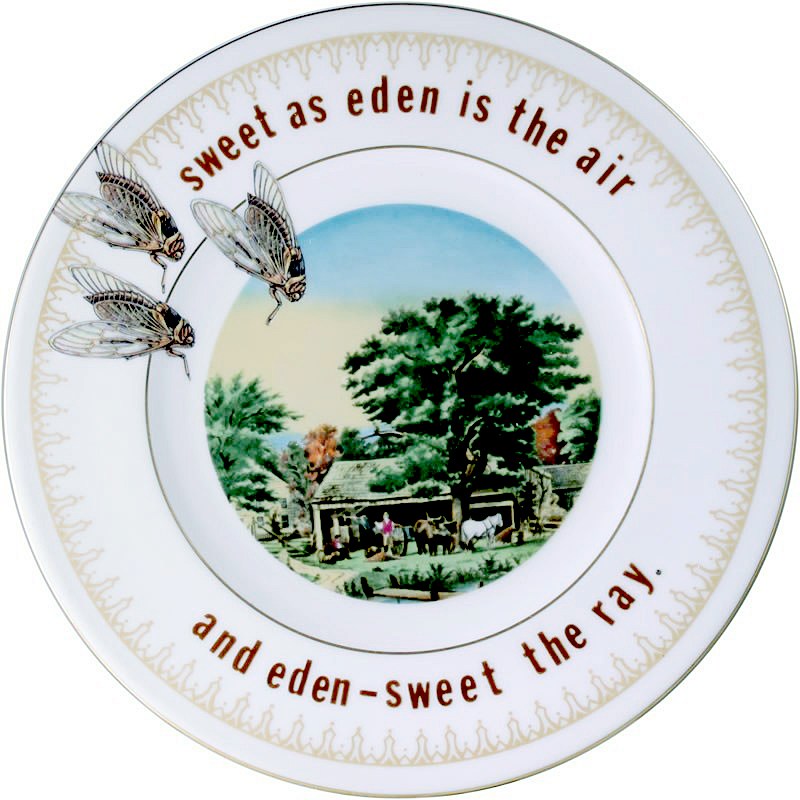
Garth Johnson,”Making Legends into Posters” from the “Proverb Plate Series,” 2010. Sand-blasted found porcelain plate with silver PVD coating. Photo courtesy of artist.
This week, HCCC’s Curatorial Fellow Sarah Darro asked Garth Johnson, Curator of Ceramics at Arizona State University’s Art Museum and Ceramics Research Center and At Your Service artist, questions about his artistic process, his relationship with collecting and craft culture for young audiences.
Sarah Darro: How have you navigated your many roles within the field of craft? As a ceramicist, writer, curator, and professor—is there a position that you identify with most?
Garth Johnson: I grew up on a farm in Nebraska. I was surrounded by handmade things, and making was definitely central to my childhood. I grew up making, then entered college at the University of Nebraska-Lincoln as an art student because art was what I was generally good at. I should add that I have hands that are very un-talented. I’m not somebody who can pick up a tool or a material and master it easily. I’ve always felt that this was an asset as an educator—I can identify with people who have many different learning styles. The “slippage” between my brain and my hands is what led me to become a writer and curator.
These days, I identify mainly as a curator. It’s a good thing that there generally isn’t a singular path for curators to embark on—it’s a field that values experience over academic achievement.

SD: Proverbs, your series that is currently on display in the exhibition At Your Service, explores the reception theory- slippages in meaning that occur through linguistic and cultural translation. “Chinglish” phrases collected from t-shirt logos during a residency in China are sandblasted across a series of metallic plates. The plates’ reflective surfaces recall a Western sense of “cool” as well as the mirrored nature of interpretation. How might the reception theory continue to play out in the gallery space?
GJ: As an artist, I am generally guilty of oversharing, overthinking, and overexplaining. I love that this series of plates is a little mysterious. The phrases on the plates came directly from t-shirts that I saw during my travels in China. There have been alot of arguments and discussions about the function of “Chinglish.” In general, I tend to fall into the camp that views the odd phrases as being signifiers of western culture. It’s kind of funny that I’m writing this on Cinco de Mayo, a day where plenty of anglos appropriate Mexican culture without thinking through the cultural implications. It’s comforting in a way to know that there is a reciprocal flow of cultural misinformation.
That said, the poet/writer in me loves these phrases as little micropoems. “Making Legends into Posters” is like a Zen koan. I hope the pieces provoke some head scratching. Because they’re on mirrored plates, there is a layer of commentary on commemoration as well.

SD: Cast shampoo bottle forms meet ornate filigree teapot handles as you create a fusion of contemporary and traditional iconography in your ceramic work. You’ve said that everything that is reused comes with its own story. What stories are you telling and how does your process of collecting come into play?
GJ: I now have two daughters—a two year old and a four year old. They have both inherited the collector gene, but more importantly, they’re surrounded by an army of enabling friends and grandparents that reinforce their obsessions by providing them with a seemingly endless stream of stuffed animals and toys. I love to watch them experience collecting and develop relationships with objects.
Some people have a spooky ability to pick up an object and intuit things about their history and makers. Edmund de Waal is a great example—he has an incredible sensitivity to objects and materials. Almost a synesthetic ability to connect holding an object with his other senses. I can claim a little bit of that. I’ve always had a curiosity about secondhand objects that extends to the makers—what possessed an artist or designer to bring that object into the world?
I wrote a book on re-purposed art, and I’ve worked in several fields linked with sustainability, but the history and meaning of objects are always more interesting to me.

SD: In your writing and through projects like your blog, Extreme Craft, you reflect on the ever-shifting dynamism of the field and a renewed interest spurred on by indie craft and DIY movements. Why do you think craft lends itself to community-building and why might it be resonating so deeply with a new generation?
GJ: It’s easy to lay out a binary that says that a digitally-saturated generation is now looking for handmade things… and I think there’s some truth to that, but I also believe that craft culture is somewhat generational. It had big booms right after World War II, again in the late 1960s and ‘70s, and is experiencing another revival. Our culture swings like a pendulum, and the slick, digital, designedly approaches of the ‘90s and 2000s are giving way to tactility.
I think food culture is also a great explanation for craft being embraced by younger people (and a bigger audience). As someone who has always been interested in food, it’s astounding to see the leaps that food culture have made in the past decade. That embrace of artisanal food, with its higher price tags and attention to minute aesthetic details bodes well for the embrace of handmade culture. The DIY and Maker movements have also erased some of the stigma that crafts have carried.
About Garth Johnson
Garth Johnson is the Curator of Ceramics at the Arizona State University Art Museum Ceramics Research Center in Tempe, Arizona. He holds an MFA from Alfred University and a BFA from the University of Nebraska-Lincoln. He is the author of the blog Extreme Craft, wrote 1000 Ideas for Creative Reuse in 2009, and has contributed writings to a myriad of anthologies and journals. He has served as the Director-at-Large on the board of the National Council on the Education for the Ceramic Arts (NCECA) and was the Curator of Artistic Programs at The Clay Studio in Philadelphia from 2013-2014. In 2008, he served as Associate Professor at the College of the Redwoods in Eureka, California. Johnson’s work has been exhibited internationally and has been featured in renowned publications including The Observer, American Craft, and Ceramics Monthly.
